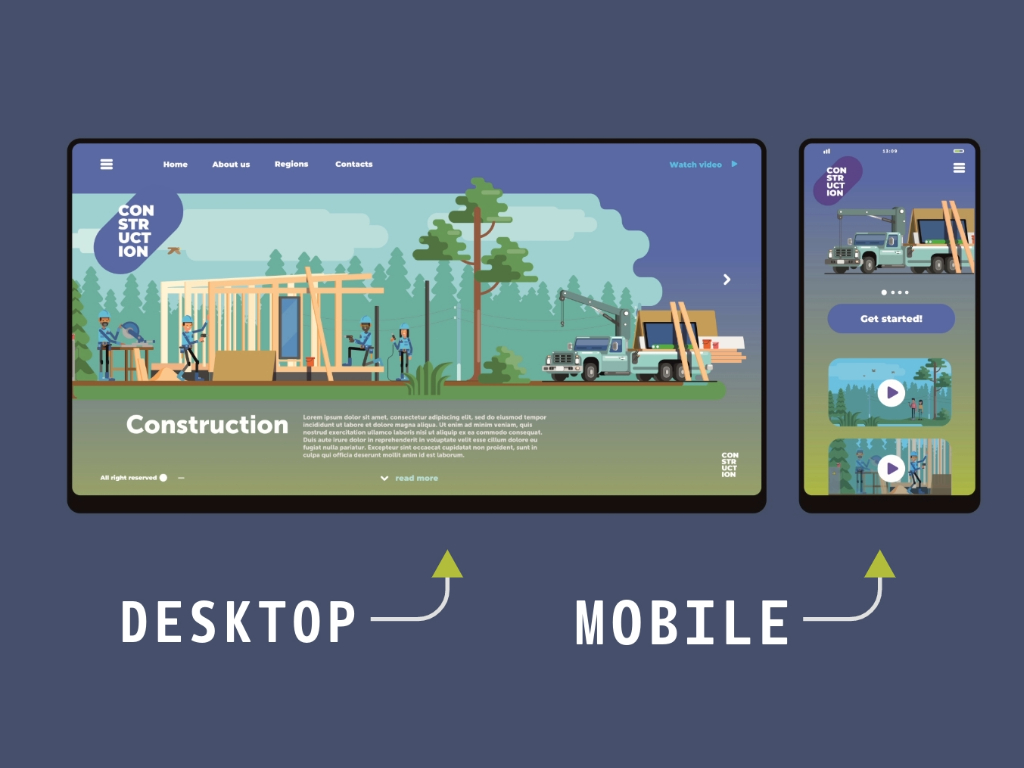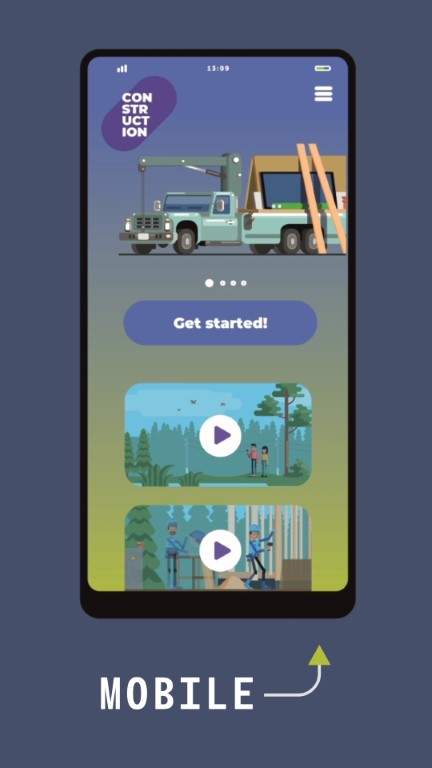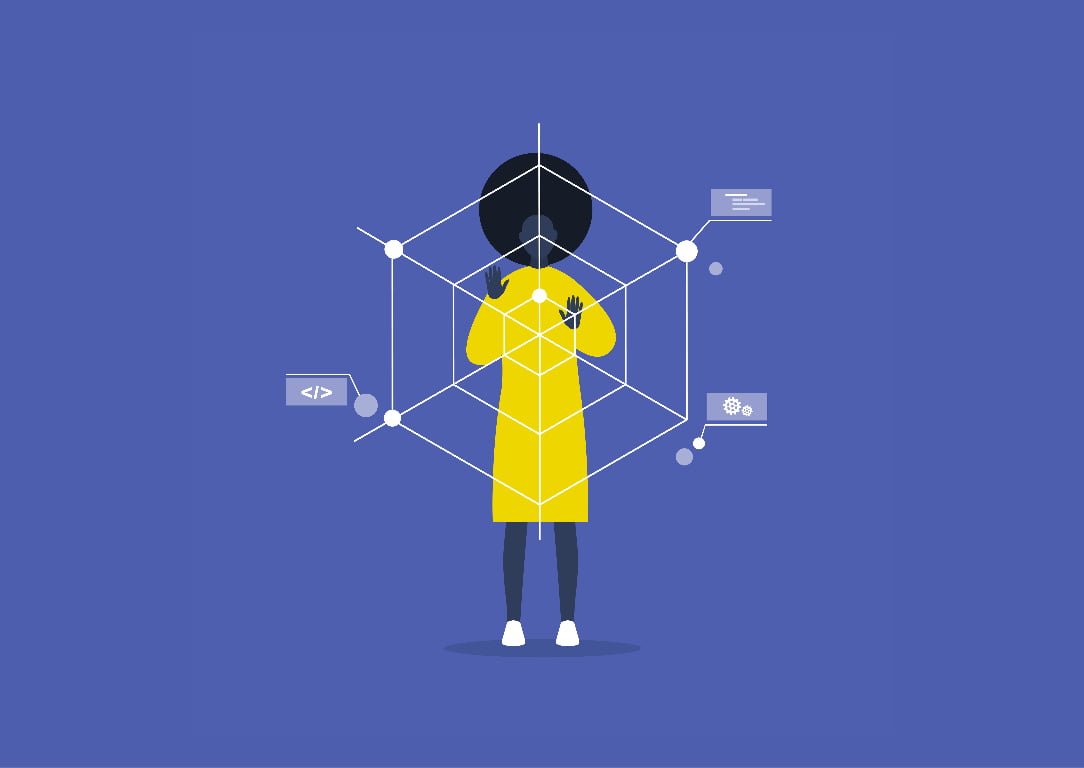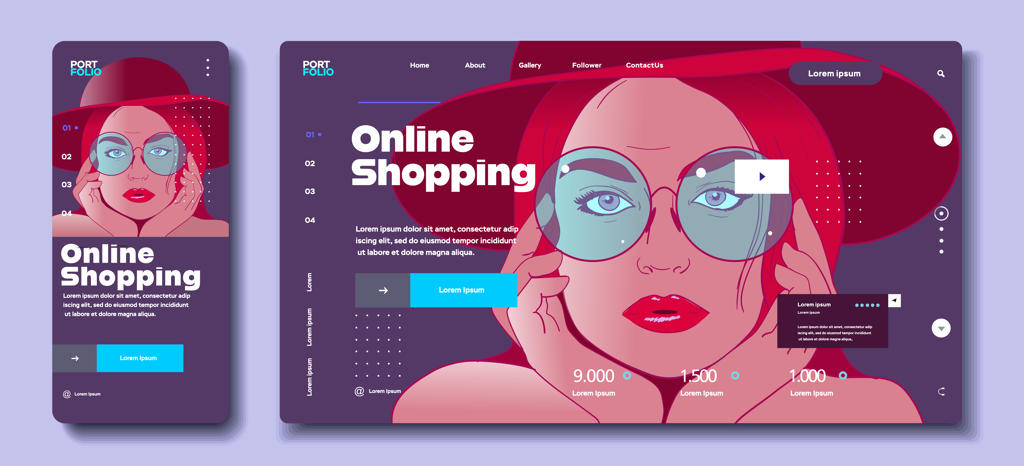Table of Contents
Understanding UI and UX Design in the Context of IA
Understanding the nuances between User Experience (UX) Design and User Interface (UI) Design is crucial for creating successful products. Both disciplines are integral to building cohesive, functional, and engaging digital environments, but they serve distinct purposes and involve different processes. One key area where these differences become apparent is in Information Architecture (IA). This article delves into the unique roles that UX Design and UI Design play in IA, highlighting their distinct approaches, methodologies, and contributions to creating effective digital experiences.
Analyzing the Roles of UX and UI in Information Architecture
When creating digital products, understanding the nuanced distinctions between User Experience (UX) Design and User Interface (UI) Design is vital. These two disciplines, while often used interchangeably by those unfamiliar with design intricacies, serve unique functions and play complementary roles in the creation of digital environments. UX Design focuses on the overall feel of the experience. It encompasses a broad range of aspects including usability, accessibility, and pleasure provided in the interaction between the user and the product. UX designers are concerned with the structure and functionality of the entire system. They conduct user research to understand the needs and behaviors of the target audience, creating wireframes and prototypes that guide the layout and flow of the product. The ultimate goal of UX Design is to ensure that the user’s journey through the product is as smooth and intuitive as possible, minimizing friction and enhancing satisfaction.
In contrast, UI Design is concerned with the look and feel of the product. UI designers are responsible for translating the wireframes and prototypes into visually appealing and interactive interfaces. They focus on aesthetics, including typography, color schemes, and button styles, ensuring that the product is not only functional but also delightful to use. UI Design bridges the gap between graphical design and interaction design, making sure that every visual element and interactive feature aligns with the overall user experience goals set by the UX team.


The Crossroads: UX, UI, and IA
Information Architecture (IA) is the structural design of shared information environments. It involves the organization and labeling of content in an effective and sustainable way. IA aims to help users find information and complete tasks, enhancing the overall usability and accessibility of the product. The distinct roles of UX and UI design converge in this critical aspect of digital product development. UX designers approach IA by focusing on the user’s journey and behavior. They conduct extensive user research to understand how users search for information and navigate through the product. This research informs the creation of sitemaps and wireframes, which map out the structure and flow of content. UX designers ensure that the information is organized logically and intuitively, making it easy for users to find what they need without frustration.
UI designers, on the other hand, bring these wireframes to life with visually appealing designs. They create interactive elements that guide users through the product, using visual cues such as icons, buttons, and color schemes to facilitate navigation. UI designers ensure that the visual hierarchy is clear, helping users understand the importance of different pieces of information at a glance. They work closely with UX designers to ensure that the visual elements support the overall user experience goals.
Synergy of UX and UI in Effective Digital Experiences
The synergy between UX and UI design in Information Architecture is crucial for creating effective digital experiences. UX designers provide the foundational structure, ensuring that the content is logically organized and accessible. UI designers build on this foundation, adding the visual and interactive elements that make the product engaging and easy to use. By understanding the distinct yet complementary roles of UX and UI design in Information Architecture, designers can create digital products that are not only functional but also aesthetically pleasing and enjoyable to use. This holistic approach to design ensures that users can easily find the information they need and complete their tasks efficiently, ultimately leading to a more satisfying and successful product experience.
Understanding UX Design and UI Design
What is UX Design?
User Experience (UX) Design is a holistic approach to creating products that provide meaningful and relevant experiences to users. This discipline is not just about designing interfaces or making products look good; it’s about crafting the entire journey that a user goes through when interacting with a product. From the moment a user first learns about a product, through the acquisition, usage, and eventual integration into their daily lives, UX Design considers every touchpoint to ensure a seamless and enjoyable experience. At its core, UX Design is about understanding and meeting the needs of users. It involves extensive research to uncover user behaviors, needs, and motivations. UX designers use this information to create personas and user scenarios that guide the design process, ensuring that the final product aligns with what users truly want and need. This user-centric approach helps in designing products that are not only functional but also resonate emotionally with the users. The process of UX Design is comprehensive and multifaceted. It begins with understanding the problem space through user research, including methods like interviews, surveys, and usability testing. This research phase is crucial as it provides the foundation for all subsequent design decisions. By empathizing with users, designers can identify pain points and opportunities for improvement, which are then addressed through thoughtful design solutions.
Once the research phase is complete, UX designers move on to the ideation and prototyping stages. Here, they create wireframes and prototypes that represent the skeletal structure of the product. These low-fidelity models allow designers to experiment with different layouts and functionalities without investing significant time or resources. Prototyping is an iterative process, where designs are continuously refined based on feedback and testing. Branding is another critical aspect that UX designers consider. A strong brand identity can significantly influence a user’s perception of a product. By integrating branding elements into the design, UX designers ensure that the product not only meets functional requirements but also conveys the brand’s values and personality. This integration helps in building a consistent and cohesive experience across all user interactions. Usability is a key component of UX Design. A product may have a beautiful interface, but if it’s not easy to use, it will fail to provide a good user experience. UX designers conduct usability testing to identify any issues that users might face when interacting with the product. These tests help in uncovering problems that might not be apparent during the initial design phases. By addressing these issues, designers can create products that are intuitive and easy to use. Functionality is another crucial element of UX Design. The product must work as intended and meet the users’ needs effectively. This involves not only the design of the user interface but also the underlying technology and infrastructure. UX designers work closely with developers to ensure that the final product functions seamlessly, providing a smooth and efficient user experience.
Key Features of UX Design
User Research
Understanding the needs, behaviors, and motivations of users through various research methods.
Usability Testing
Evaluating a product by testing it with representative users to identify usability issues and areas for improvement.
Wireframing
Creating simple, low-fidelity representations of a product's layout to visualize its structure and content.
Prototyping
Developing interactive models of a product to test its functionality and gather feedback before full-scale production.
What is UI Design?
User Interface (UI) Design, on the other hand, focuses on the visual and interactive aspects of a product. It is the discipline that breathes life into the structural skeleton provided by UX design, transforming it into a visually engaging and user-friendly interface that users can interact with effortlessly. The primary goal of UI Design is to create an interface that is not only aesthetically pleasing but also functional, ensuring that every visual element serves a purpose and enhances the overall user experience. UI designers are responsible for the look and feel of a product. They meticulously craft the visual components of the interface, such as typography, color schemes, buttons, icons, and other interactive elements. By selecting harmonious color palettes and ensuring consistency in design elements, UI designers create a visually cohesive and attractive interface that aligns with the brand’s identity and appeals to the target audience. Their work ensures that the first impression users have of the product is positive, inviting, and reflective of the brand’s values. Beyond aesthetics, UI Design is deeply rooted in functionality. UI designers must consider how users will interact with the product and ensure that the interface is intuitive and easy to navigate. This involves designing buttons that are easily clickable, menus that are logically organized, and forms that are simple to fill out. The goal is to reduce cognitive load, allowing users to accomplish their tasks with minimal effort and without confusion. For instance, a well-designed UI will guide users through a checkout process seamlessly, reducing the likelihood of cart abandonment and enhancing user satisfaction.

All Interaction
Interactive elements are a crucial aspect of UI Design. These elements, such as hover effects, animations, and transitions, play a significant role in enhancing the user experience by providing feedback and making interactions more engaging. For example, a button that changes color when hovered over indicates to the user that it is clickable, while a smooth transition between pages can make navigation feel fluid and natural. These subtle interactions, when thoughtfully designed, can significantly improve the overall user experience by making the interface feel more responsive and interactive. UI Design also involves the creation of design systems and style guides. These tools ensure consistency across the product by providing a set of standards for visual and interactive elements. A design system might include guidelines for typography, color usage, spacing, and component behavior, ensuring that all designers and developers working on the product adhere to the same principles. This consistency is crucial for creating a unified user experience, especially in large-scale projects where multiple teams are involved. The process of UI Design is iterative and collaborative. UI designers often work closely with UX designers, developers, and other stakeholders to refine the interface based on feedback and testing. This collaboration ensures that the final product not only looks good but also works well, providing a seamless and enjoyable user experience. Regular usability testing and user feedback sessions allow UI designers to identify any issues with the interface and make necessary adjustments, ensuring that the design meets the needs and expectations of the users.
Key Features of UI Design
Visual Design
Creating the overall look and feel of the product, including typography, color schemes, and visual elements.
Interaction Design
Designing the interactive elements of the product, such as buttons, menus, and other controls.
Prototyping
Similar to UX Design, but with a focus on the visual and interactive elements.
Usability Testing
Ensuring the visual and interactive elements are intuitive and easy to use.
Information Architecture in UX Design
Role of Information Architecture in UX Design
While IA is often associated with UX Design, it also plays a significant role in UI Design. In UI Design, IA focuses on organizing visual and interactive elements in a way that supports usability and aesthetics.
Importance of IA in UI Design:
- Enhances Visual Appeal: A well-organized interface is more visually appealing and easier to navigate.
- Supports Interactivity: Proper IA ensures that interactive elements are logically placed and easy to use.
- Improves User Engagement: A visually appealing and intuitive interface can lead to higher user engagement and satisfaction.
UI Design Principles and Information Architecture
The principles guiding IA in UI Design ensure that the visual and interactive elements are effectively organized and aligned with the overall design goals.
Key Principles:
- Hierarchy: Organizing elements to create a clear visual hierarchy, guiding users’ attention to the most important parts.
- Alignment: Ensuring that elements are properly aligned to create a cohesive and balanced layout.
- Proximity: Grouping related elements together to enhance usability and visual coherence.
- Consistency: Maintaining consistency in visual and interactive elements to create a unified experience.
UI Design Tools and Information Architecture
Several tools are used in UI Design to create and refine Information Architecture. These tools help designers visualize and organize the visual and interactive elements of the product.
Key Tools:
- Sketch: A popular design tool for creating wireframes and prototypes.
- Figma: A collaborative design tool that allows teams to work together in real-time.
- Adobe XD: A comprehensive design tool for creating and testing prototypes.
- InVision: A tool for creating interactive prototypes and gathering user feedback.
Differences between UX Design and UI Design in Information Architecture
Comparing UX Design and UI Design Approaches
The approaches to IA in UX Design and UI Design differ significantly, reflecting the unique focus and goals of each discipline.
UX Design Approach:
- User-Centric: Focuses on understanding and meeting the needs of users.
- Research-Driven: Relies heavily on user research and usability testing.
- Content-Focused: Emphasizes the organization and structure of content.
UI Design Approach:
- Visual-Centric: Focuses on creating visually appealing and interactive interfaces.
- Design-Driven: Relies on visual design principles and aesthetics.
- Element-Focused: Emphasizes the organization and placement of visual and interactive elements.
User Experience vs. Visual Design
The primary difference between UX Design and UI Design in IA lies in their focus on user experience versus visual design.
UX Design:
- Focus on Usability: Ensures that the product is easy to use and meets the needs of its users.
- Emphasis on User Satisfaction: Aims to create a positive and meaningful user experience.
- User Research and Testing: Involves extensive research and testing to understand user needs and behaviors.
UI Design:
- Focus on Aesthetics: Ensures that the product is visually appealing and engaging.
- Emphasis on Visual Consistency: Aims to create a cohesive and visually consistent interface.
- Design Principles: Involves applying visual design principles to create an aesthetically pleasing interface.
Tools and Techniques in UX and UI Design
Both UX Design and UI Design use various tools and techniques to create and refine Information Architecture. However, the focus and application of these tools differ.
UX Design Tools and Techniques:
- Wireframing: Creating low-fidelity layouts to visualize the structure and content.
- Prototyping: Developing interactive models to test functionality and gather feedback.
- Usability Testing: Evaluating the product with real users to identify issues and areas for improvement.
UI Design Tools and Techniques:
- Visual Design Tools: Using tools like Sketch, Figma, and Adobe XD to create wireframes and prototypes.
- Interaction Design: Designing interactive elements to enhance usability and engagement.
- Usability Testing: Ensuring that the visual and interactive elements are intuitive and easy to use.
Starting a Business or Personal Website?
Start By Setting Up a Website
Your online presence can be as crucial as your physical one, owning a domain name is not just an option—it’s a necessity.
Domain Search
Top Level Domains Starting at $5.99
Cost-Effective Plans for All Levels
Bottom Line
UX Design and UI Design, though distinct in their focus, work together harmoniously to form the foundation of effective Information Architecture. UX Design is centered on the creation of user-centric experiences, placing a strong emphasis on usability, comprehensive user research, and meticulous content organization. By understanding the needs, behaviors, and motivations of users, UX designers are able to develop intuitive and efficient pathways that facilitate seamless interactions. This process involves extensive usability testing and iterative improvements to ensure that the digital product aligns with user expectations and enhances their overall experience. The goal of UX Design is to make the user’s journey as smooth and satisfying as possible, ensuring that all elements are strategically placed to support ease of use and accessibility.
On the other hand, UI Design is primarily concerned with the visual and interactive aspects of a digital product. It focuses on applying visual design principles to create aesthetically pleasing interfaces that captivate users and encourage engagement. UI designers meticulously organize visual and interactive elements to craft a cohesive and appealing user interface. This includes the thoughtful placement of buttons, menus, icons, and other interactive components that guide the user through the product in an engaging and visually coherent manner. The emphasis on visual consistency and interactive design ensures that the product is not only functional but also delightful to use. Understanding the complementary nature of UX and UI Design is essential for creating digital products that effectively meet user needs while achieving broader business goals. By integrating the strengths of both disciplines, designers can develop products that are both user-friendly and visually compelling, resulting in a successful and satisfying user experience.
UX design is the process of enhancing user satisfaction by improving the usability, accessibility, and pleasure provided in the interaction between the user and the product.
Jesse James Garrett
Call to Action
If you’re aiming to enhance the Information Architecture of your digital products, it’s essential to recognize the unique contributions of both UX Design and UI Design. These two disciplines, when effectively integrated, can transform your digital offerings by creating user-centric experiences and visually compelling interfaces. Whether you’re a designer seeking to refine your skills, a developer looking to streamline functionality, or a business owner striving to boost user engagement and satisfaction, understanding and implementing robust Information Architecture is key.
By appreciating the distinct roles of UX and UI Design, you can ensure that your products not only meet but exceed user expectations, leading to increased engagement and loyalty. Dive deeper into the world of UX and UI Design to discover how these principles can revolutionize your approach to digital design. For more in-depth insights, practical tips, and expert advice, we invite you to subscribe to our newsletter. Stay updated with the latest trends and best practices in the industry. Additionally, if you seek personalized guidance, don’t hesitate to contact our team of experienced designers who are ready to help you elevate your digital products to the next level. Reach out to us today and start your journey towards creating exceptional user experiences and stunning interfaces.



